|
|
Post by Johansson on Feb 15, 2015 17:15:20 GMT -5
A couple more pics of the bike, it looks pretty slippery.  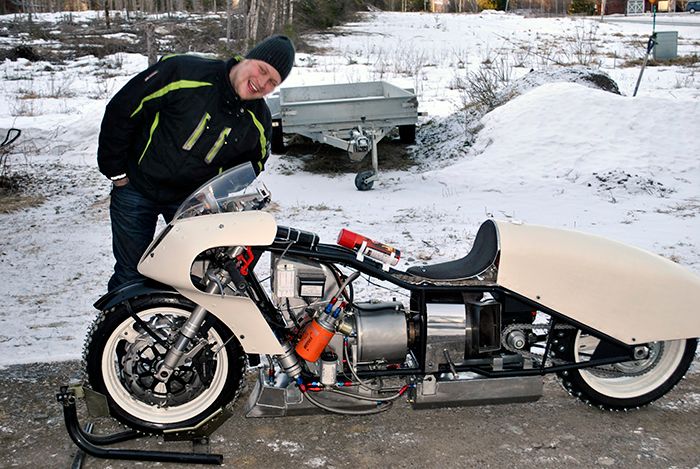 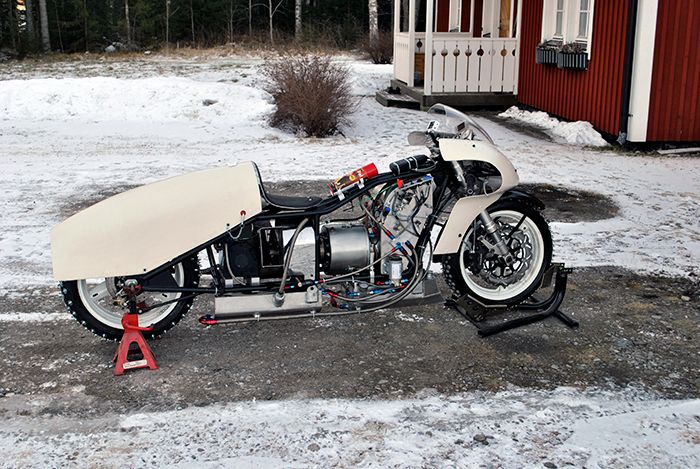 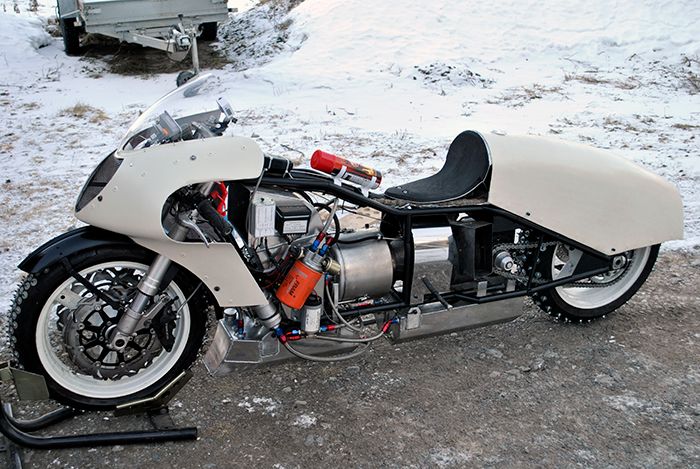 Cheers! /Anders |
|
|
|
Post by racket on Feb 15, 2015 19:12:26 GMT -5
Hi Anders You might need to invest in a better system for the temps , after a bullet proof oil system an accurate temperature measuring system is the next most critical one to have. The YCT brand I've been using has been reliable , I've used the YC821 model , but it appears they've been superseded by others www.fmfranklin.com.au/data/yc821.pdf , and used with good quality K type pickup that are compatable with the thermometer , it would probably pay to consult a reputable instrument supply company to get a matched set of components, theres a lot of extra horsepower to be had if we can confidently run our engines up to maximum temperatures knowing those temp readings are accurate to within 1% rather than having to have a 10% buffer just in case our thermometer isn't giving accurate readings . . With temps up near 800C there should be a decent glow coming from the freepower www.blksmth.com/heat_colors.htmCheers John |
|
|
|
Post by smithy1 on Feb 15, 2015 21:08:29 GMT -5
Yep...John is quite right as usual...with the metals we tend to use.....they'll get a little bit of a "glow" happening ~650c or so. An ITT of 800c is getting close to the mark so you should be making a goodly amount of gruntage from that free power.. ;-) No wonder the back brake is struggling..!
Cheers,
Smithy.
|
|
|
|
Post by pitciblackscotland on Feb 15, 2015 21:18:13 GMT -5
Hi Anders,
The pics of the bike look really cool with the snow in the background :-)
Cheers,
Mark.
|
|
|
|
Post by Johansson on Feb 16, 2015 0:16:39 GMT -5
You are right John, I´ll open up the leather after the race and get me a trustworthy temp reading equipment. It is just so strange, the temps start out ok just after the engine is started and then they start climbing higher/suddenly drop with no visual change to the exhaust duct colour. My last resort is to use the digital dash for the T2 reading and connect the Fluke probe to it, that way I eliminate the analogue gauge in case that they are a bad match for the thermocouples. I won´t need the T2 reading anyway for the race since I apparently have enough trouble watching the oil pressure...  Smithy: There must be some serious torque if the brakes won´t hold it at slightly above 1 bar.  Mark: Thanks!  |
|
|
|
Post by Johansson on Feb 16, 2015 1:29:47 GMT -5
The electrician at work asked me just now if I had the cables from the thermocouple connected the right way, could it be that switching the cables upsets the temp reading?
I´ll do some testing with a heat pistol this week and see if there is any difference between the two, and test both the digital and the analogue gauge as well.
|
|
|
|
Post by racket on Feb 16, 2015 2:32:58 GMT -5
Hi Anders
When I was having thermocouple "problems" with different gauges reading different temperatures whilst mounted in the same jetpipe during the early days of the TV84 development , I made up a short length of bored 25mm bar with tapped holes in each end to screw the pickups into so that the ends of the thermocouples were very close to each other, by heating the outside of the bar surrounding the pickups with the oxy torch, both pickups should have experiencing the same temperatures from the surrounding air in the bore , the relatively thick "wall" of the setup meant a moderately slow temperature rise which allowed easy comparing of the two gauges to judge any discrepancies as the bar heated.
By using the colour guide in the "Blacksmiths" Link I sent in my last email you should be able to get a good idea of bar temperatures if the experiment is done in low light so the "glow" colour can be easily judged.
Cheers
John
|
|
|
|
Post by Johansson on Feb 16, 2015 3:19:35 GMT -5
Hi John,
I´ll make up a similar "box" for the thermocouples and do some testing. Is the colour chart the same for stainless as for mild steel?
Cheers!
/Anders
|
|
|
|
Post by racket on Feb 16, 2015 3:44:34 GMT -5
Hi Anders
I'm not sure if stainless would be exactly the same as mild steel as I've never been able to find a stainless chart , but it shouldn't be a lot different , I used a section of mild steel bar as I was only concerned about "variation" rather than actual temperature reading at that time .
LOL,.............. make up two bars , one in stainless and the other in mild and do a comparison check of colours vs temperatures :-)
The thermocouples only need to be lightly screwed in so that the expanding air inside can easily escape.
I'll be very interested in your observations .
Cheers
John
|
|
|
|
Post by Johansson on Feb 16, 2015 4:27:03 GMT -5
Hi John, Ok. I´ll try to figure something out. There is very little time for experimenting during the upcoming evenings but I´ll try to get a mild steel bar made, we have an oxy torch at work so if I skip lunch I could do it some day this week. Stay tuned.  Cheers! /Anders |
|
|
|
Post by Johansson on Feb 16, 2015 15:40:26 GMT -5
I just did some experimentation with different thermocouple arrangements, since I only have a propane torch I couldn´t heat the steel cube I made enough to get it glowing so I made a test chamber from a steel tube instead.  As a reference I used a hand held unit with a Fluke thermocouple, I tested it against the analogue gauge with its original thermocouple, the analogue gauge with a Fluke thermocouple, and a digital gauge with both types of thermocouples.  * The reference/Fluke and the analogue/Fluke measured the same, but the analogue gauge was much slower in response. * Compared to the reference the analogue gauge/original thermocouple was both slower and read aprox.100°C lower in temp. * The reference/Fluke and digital/Fluke read the same up to 800°C give or take couple of degrees. 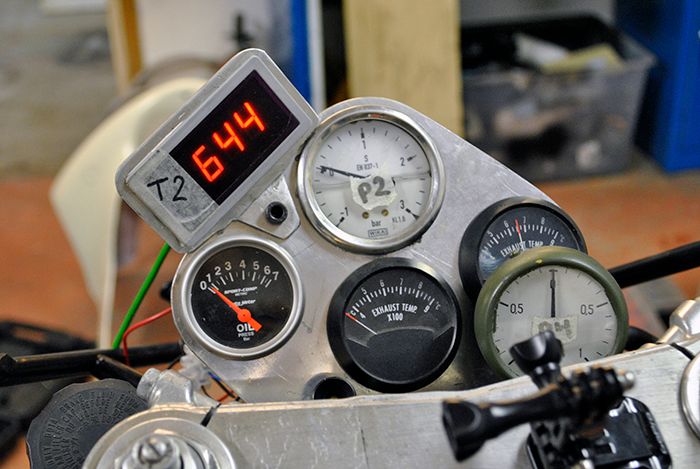 The last test was the heat image, I managed to take a pic of the thermocouples when the temp had settled close to 750°C. (had to let go of the cables to take the pic so the right one tilted upwards and got a little bit hotter than the left one, the upper thermocouple was probably a tad hotter than 750°C when I took the picture.) 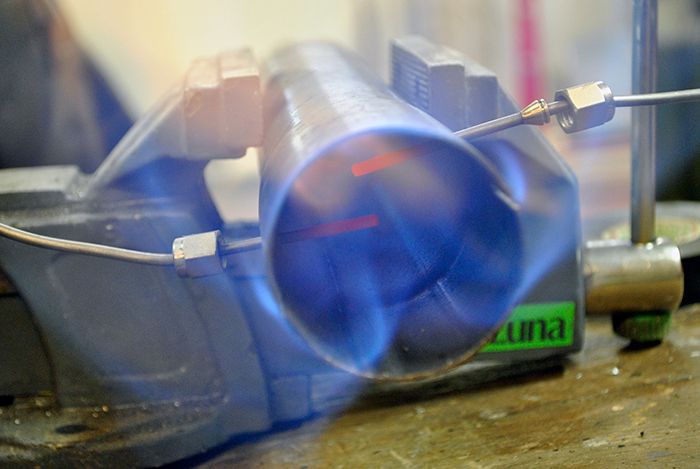 Here is the temp chart that John linked to earlier, the tip color seems to be somewhere between the 704°C and the 760°C mark in the chart so I think I can assume that the reading is pretty correct. 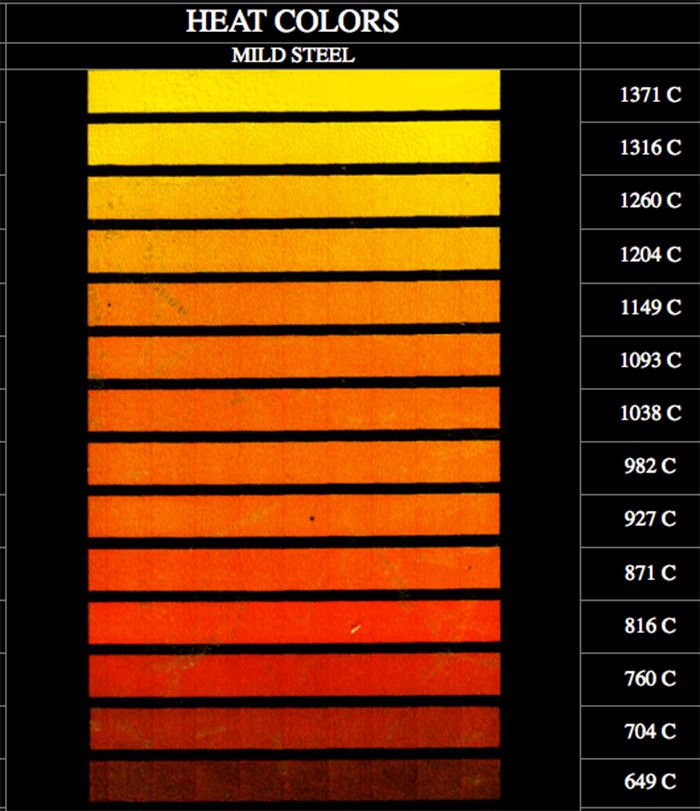 So, what have I learned from this? I will remove the analogue gauge and its probe and couple a Fluke thermocouple to the digital display I used for measuring T2 earlier. Much faster response and an, as far as I can tell, accurate reading. Cheers! /Anders |
|
|
|
Post by racket on Feb 16, 2015 19:55:51 GMT -5
Hi Anders
Thats sounds like a sensible solution :-)
100 C is a big under read ..............throw that one away
Cheers
John
|
|
|
|
Post by Johansson on Feb 17, 2015 9:32:09 GMT -5
I´ll put it straight in the trash bin tonight.  |
|
|
|
Post by Johansson on Feb 17, 2015 17:58:20 GMT -5
To stop the oil leaking from the freepower shaft seal into the exhaust housing I fitted a needle valve and a pressure gauge to the gearbox oil line, now I can adjust the oil pressure over the oil jets and hopefully find a setting that gives plenty of cooling for the bearings without flooding the shaft tunnel as it probably did during the last test.  I also removed the analogue temp gauges and connected the digital gauge to the Fluke thermocouple, fitted an oil temp gauge and removed the rev counter since it had quit working for some reason. I can´t see it anyway when I run the bike and the LED diodes are probably causing a bit of turbulence where they sit just in front of the compressor wheel so I decided to run without it. With 10°C outside temp I reached 66.000rpm at 2.5 bar P2 so if I keep the max pressure a bit lower than that I should be safe.  I fitted a rubber splash shield to keep any water or ice from being thrown from the front wheel into the air intake.  Before I called it a night I started fitting some decals to the rear fairing, Compucar is Ernies business and the other sticker speaks for itself... *LOL*  Cheers! /Anders |
|
|
|
Post by racket on Feb 17, 2015 18:48:22 GMT -5
Hi Anders
2.5 bar at 66K is just about spot on what the comp map gives, you'll probably have a bit more pressure vs rpm due to the colder air temps and certainly some extra mass flow , all looking good , 66,000 gives a bit of a buffer for safety during this first run .
You must be getting excited about giving her a good handful of throttle .................just hang on tight for the ride :-)
Cheers
John
|
|